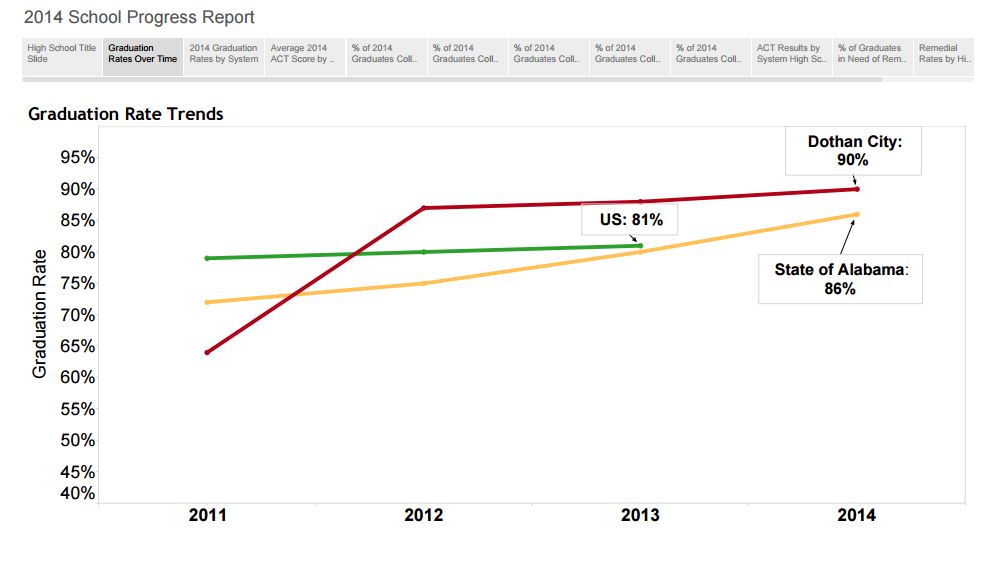
Each year, PARCA travels to Dothan to present data on the city school system to educators, parents, and the public.
The PARCA analysis, sponsored by the Dothan-based Wiregrass Foundation, presents Dothan City School enrollment, financial data, and test scores results as they compare to peer school systems and to state and national averages. How does the system stack up over all? How do students from poverty backgrounds perform compared to similarly-situated students statewide? How do nonpoverty students perform compared to peers elsewhere? What is the system’s ultimate success rate in preparing students for college as measured by the ACT (the college readiness assessment) and by the rate at which Dothan students have to take remedial education courses after enrolling in college?
The deep dive into the data is part of the Dothan City School System’s commitment to continuously improve. The analysis provides a basis for understanding the test results. The system takes ownership of the results, providing an opportunity to celebrate successes, but also to identify areas in need of improvement. Strategies are developed to counter weaknesses. Resources are devoted to those strategies, and future results are monitored.
It’s an approach that has led to success. In 2005, over half of Dothan’s system-level results on the Alabama Reading and Math Test were below the state average. By the 2012-2013 school year, all the system’s results were at or above the state average.
Starting in 2014, Alabama changed its statewide assessment test to the ACT Aspire, and it was the results of the new test that were presented this week, along with financial data and college readiness results from ACT. Dothan’s baseline results showed that on the new tests, Dothan, as a system, bested the state average on most measures. However, when the results are viewed at the school and grade level, it is clear there is room for improvement. Like school systems across the state and nation, Dothan sees a wide disparity in results between poverty and nonpoverty students. Dothan schools with high percentages of poverty in the student body generally showed results that trailed far behind state averages. On the other hand, on several measures, poverty and nonpoverty students at Dothan magnet schools scored proficient at almost the same rate, erasing that stubborn achievement gap. In fact, in some grades and subjects, poverty students at Dothan magnets beat the proficiency rate of non-poverty students statewide.

